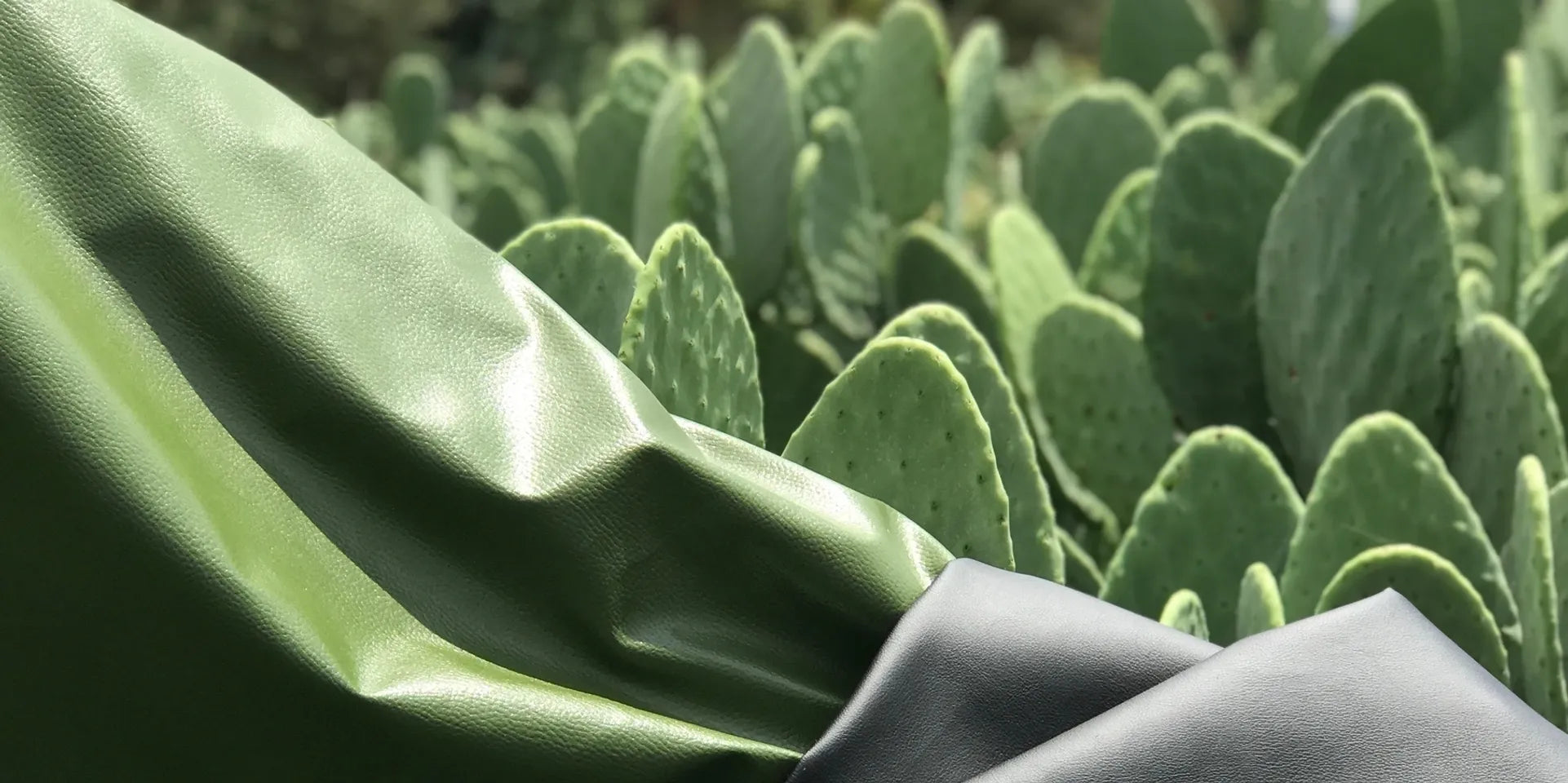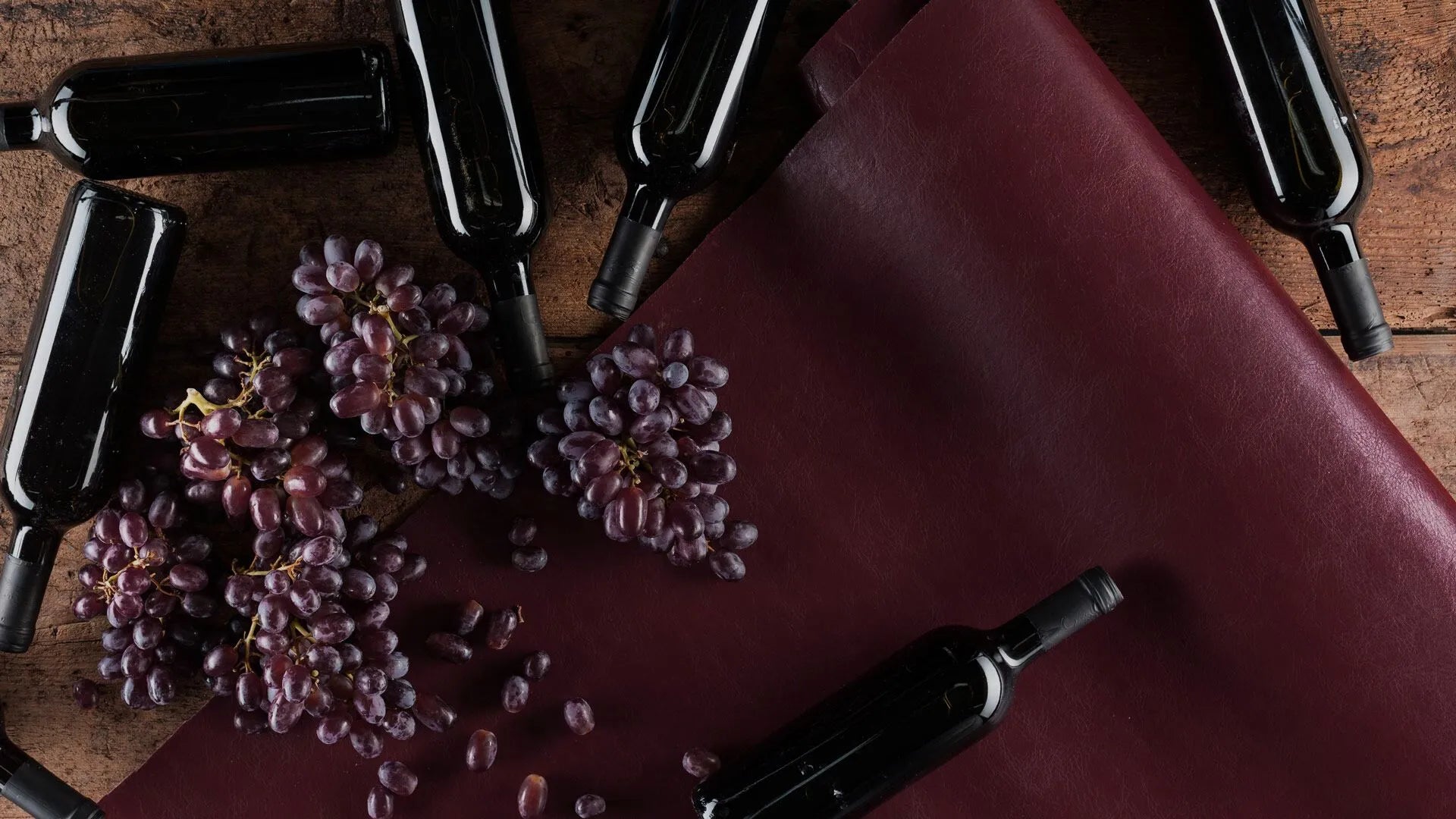Innovative materials
We at Bohema Clothing, first introduced shoes made from innovative plant-based materials to the Polish market in 2019.
Since then, we have become a pioneering brand that creates shoes from plant-based materials. We were the first, not only on the Polish market, but also the world to manufacture footwear made of cactus leather.
This means so much to us because we are experts in the selection and development of plant materials for the type of footwear. When you choose our shoes, you can be sure that they are not only vegan, sustainable and fair trade, but also durable, comfortable and of the highest quality.
Take a look at what plant-based materials we use to create our shoes and accessory collections.

Cactus leather
Desserto® cactus leather is a highly sustainable vegan plant-based leather made from cactus. What sets it apart is its extraordinary softness to the touch, and its excellent durability. Cactus leathermeets the most stringent quality and environmental standards. It was created by a duo from Mexico - Adriana Lopez and Marte Cázarez Duarte. The goal is to offer cruelty-free, sustainable alternatives without toxic chemicals, phthalates and PVC. Desserto® cactus leather is also partially biodegradable. It's also worth mentioning that cactus leather has been recognized by the LVMH conglomerate in the LVMH innovation award 2020, among others
Collapsible content
Why cactus leather?
Cactus is a very hardy plant that does not need additional hydration. It is also a natural carbon sink, with a high capacity to capture CO2 - from 14 acres of cultivation, 8100 tons of CO2 / year are absorbed, while only 15.30 tons of CO2 per year are produced.
How is cactus leather made?
Cactus leather is extremely efficient when it comes to the production process. One cactus can produce hundreds of square meters of material in a short period of time. All because you don't need to cut down the entire plant to create this vegan material. All you need to do is cut off the older leaves, which will grow back in the same place after about 7 months. Cactus skin is made from the nopal cactus (Opuntia ficus-indica), also known as prickly pear or Indian prickly pear. The cactus is harvested twice a year by cutting off only the mature leaves of the cactus, so that the cactus is not damaged and can continue to grow.
The leaves are then cleaned, broken into smaller pieces and left in the sun to dry for at least three days. The drying process, which depends on humidity levels, can take up to five days.The fibers are separated from the dried mulch. The powdered protein is then extracted, transferred to a laboratory and mixed with various formulas that contain dyes to form a liquid bio-resin.
The resin is then poured onto a support material, forming the cactus skin. The type of material used depends on the future use of the fabric, but recycled cotton is usually used. It takes about 3 cactus leaves to make one running meter of Dessertocactus leather.
Is cactus leather durable?
Yes. Cactus leather is durable and long-lasting: resistant to water, abrasion, friction and tearing.
Is cactus leather eco-friendly?
Yes, cactus leather iseco-friendlybecause it is made from biobased cactus and BioPU (from non-edible cooking oils such as castor oil and nut shell oil). No additional water is needed for its production, and the cactus itself absorbs CO2 from the atmosphere. Cactus skin is also partially biodegradable under anaerobic thermophilic conditions and can be recycled chemically or mechanically.
What certifications does cactus leather have?
GRS certification sets specific requirements for recycled fibers. The GRS certification can be carried by products that contain at least 50% recycled materials.
OEKO-TEX Standard 100. This certification informs the consumer about a fabric free of harmful chemicals. cactus.
USDA Organic (65-90%) is the most restrictive organic certification worldwide. Products, bearing this certification, must be a minimum of 65% organic in this case. Product ingredients must not be genetically modified, artificially preserved or chemically processed.
Vegan cactus shoes - the first were from a Polish brand
We, Bohema Clothing, created the world's first shoes made from cactus.
Cactus leather is flexible and looks like animal skin. It is ideal for all shoe models, so we can create both vegan flip-flops, vegan sandals, vegan moccasins, vegan ballerinas, vegan boots and even vegan cowboy boots.We believe that vegan shoes are the future of fashion. Plant-based cactus footwear is not only cruelty-free, but also eco-friendly, making it the best alternative available.
Corn leather
Like many other vegan plant-based leathers, corn leather is a high-quality, innovative material which is partially made from plant waste. As with all othervegan materials, corn leather was designed as a less harmful and more sustainable alternative to animal skin.

Collapsible content
Why corn leather?
As we mentioned before, corn leather has been developed to be an animal-friendly alternative to so-called ‘natural’ leather. This relatively new fabric fits in well with otherplant based leathers because it is considered a new generation material as it combines organic plant material and bio PU. The corn used for the base material is a non-food crop, so it does not siphon off food resources from human and animal supply chains.The corn leather we use to create our vegan shoes contains as much as 74% biobase.
How is corn leather made?
Corn is an annually renewable material. After harvesting, the corn is fermented or chemically transformed to extract dextrose. This process does not require the use of petrochemicals. The fibers are derived from dextrose, a simple sugar found in corn. The dextrose is used to form a polymer. The polymer is formed into "pellets" that can be extruded and used to make various products, including fabrics.
Is corn leather durable?
Yes! With proper care, corn leather is very durable and long-lasting. A sponge with soap will easily remove residue, dust or dirt from vegetable leather. As with all materials, abrasive, cleaning and bleaching agents should be avoided.
Is corn leather eco-friendly?
Yes corn leather is eco-friendly, moreover, it is the best alternative to animal leather, as it contains as much as 74% biobased combined with bioPU and viscose.
What certifications does corn leather have?
Corn leather has the following certifications:
LCA (life cycle assessment) shows that Viridis® is more sustainable than any other similar synthetic material.
USDA bio preferred.
OEKO-TEX Standard 100.
FSC®
Corn leather is reinforced with a viscose backing from sustainably managed forests (FSC-certified)
What is the FSC certification of viscose reinforced with corn skin?
FSC® (Forest Stewardship Council®), a certification system, allows you to distinguish wood products that come from responsibly managed value-added forests.
The program is based on the principles of sustainability and responsible forest management practices, as well as principles to track the trade and production of wood products from certified forests.
What is FSC certification?
The Forest Stewardship Council® (FSC) is an independent non-governmental organization created in response to growing concern about deforestation. Established in 1993, it is today an organization recognized worldwide for its practice of supporting forest certification.
FSC certification is a voluntary standard focused on promoting responsible forest management on a global scale. All FSC-certified products have been verified along the entire supply chain - from origin to final destination.
FSC Forest Stewardship Certification is designed for entities that self-manage their forest resources and want to establish and communicate responsible practices to their consumers. Forest managers who wish to become FSC certified must also obtain chain of custody certification to sell their products.
Vegan shoes made from corn leather: Sustainability in fashion.
We all know that the most sustainable items are those we already own. One of the main reasons our clothes end up in landfills is their poor quality and durability. Buying fashion made from sustainable, long-lasting materials, such as shoes made from corn leather, may cost a little more, but the investment is well worth it.
All of our corn leather shoes are handmade by local manufacturers. The right selection of plant-based materials such as corn leather, cactus leather, grape leather andapple leather combined with the craftsmanship and experience of our shoemakers is a guarantee of quality for years to come.
Grape leather (wine leather)
VEGEA® is an innovative material characterised by a high content of plant-based, renewable and recycled raw materials: grape remnants from wine production, vegetable oils and natural fibres from agriculture. The name is a combination of VEG (Vegan) and GEA (Mother Earth)and was created to identify the next generation of innovative alternative materials to animals, ideal for shoes or accessories.
VEGEA® is made from a biobased material characterised by a high content of plant-based raw materials, which is spread on sustainable base textiles.

Collapsible content
Why grape leather (wine leather)
The wine industry in Italy produces 26 billion litres of wine each year, during this process tons of wine waste are produced and usually discarded. From this amount, 3 billion m2 of grape skin can be created annually. VEGEA® works closely with Italian wineries and transforms the waste into a sustainable and quality material.
By usingnatural plant products and mixing them with recycled plastics, we are not only helping to stop the production of new plastics that are causing massive destruction of our planet, but we are also cleansing the earth of waste and giving it new life.
How is grape skin made?
Grape waste like pulp, skins, stems and seeds are collected, recycled and blended with plant-based resins, bio-PU or water-based PU to create a leather-like material. The grape seeds themselves contain about 35% cellulose , from which the fibre can be made.For this process, instead of using petroleum oil, bio-PU from grape seeds is used, making Vegea not only a cruelty-free, but above all a sustainable material.
Is grape skin durable?
Yes, grape skin is durable and resistant to moisture or water. This innovative vegan material has been recognized for its durability, winning awards: Start & Cup Award 2015, Start & Restart 2016, PETA Innovation Award 2017 and Global Change Award 2016.
Is grape leather eco-friendly?
Yes, grape leather is eco-friendly because it is produced from waste from the wine industry with a minimal amount of non-toxic chemical reagents, Vegea grape leather is also made using a process that reuses the water used in its production. Unlike animal skins, grape leather is a by-product: as a rule, every 10 litres of wine produces 2.5 litres of waste.Although Vegea is not yet biodegradable and only partially recyclable, it is one of the most sustainable materials for shoes or accessories with a long life cycle.
What certifications does grape leather have?
- GRS (Global Recycled Standard)
- REACH - complies with the most stringent European regulations
- Global Change Award.
